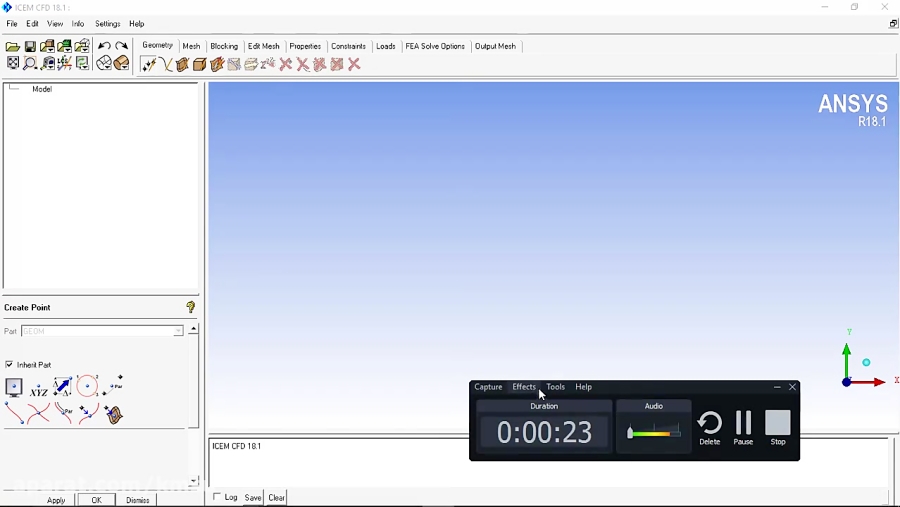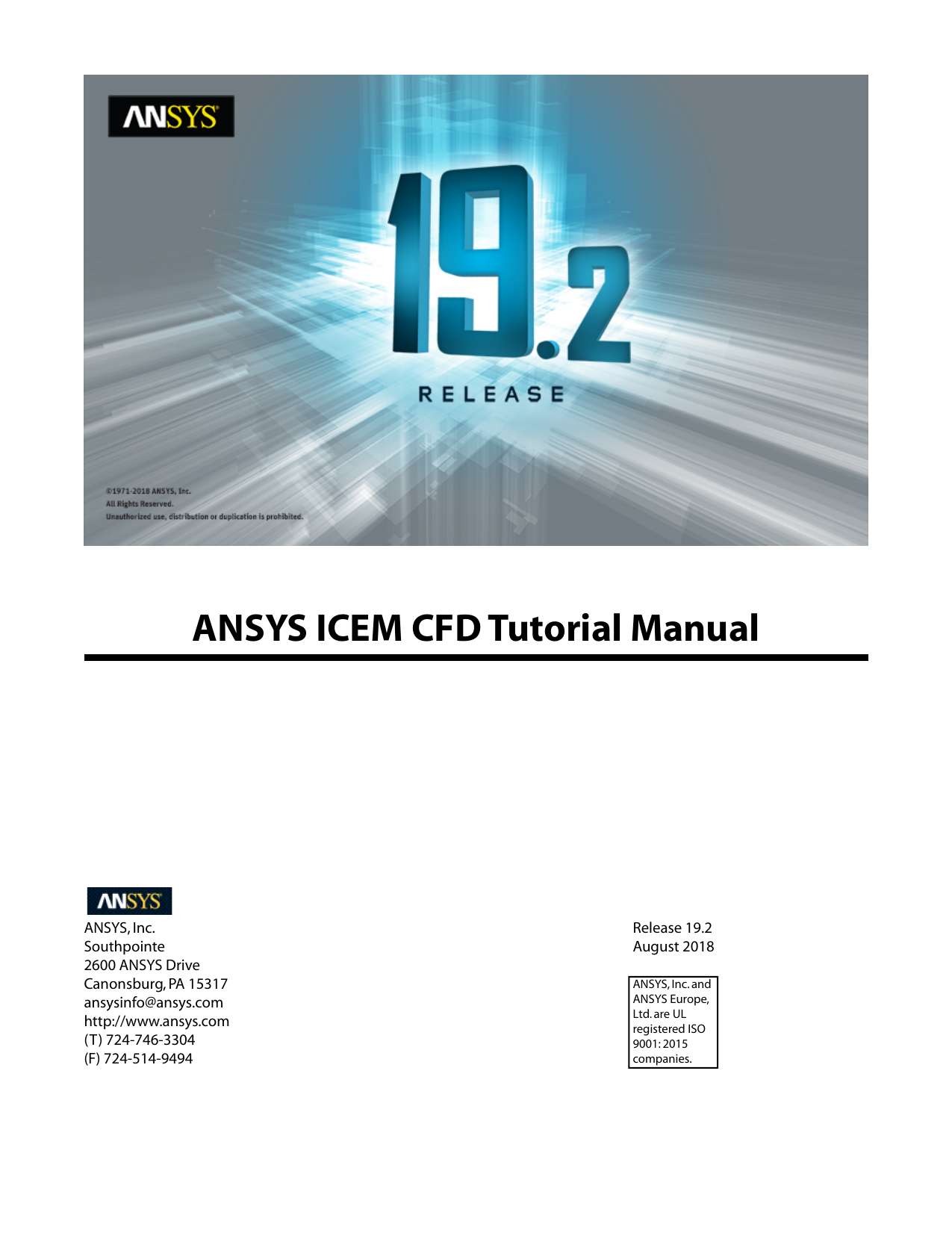

The volume name in the block file not being recognized by the tetin (geometry)Ĩ. The volume part name within the tetin file.

The use of a material point is not actually required. Rotate the model to confirm that the new material point is within the volume and does not just appear so from one perspective. Click Apply so that FLUID appears under Parts in the display control tree. To accept the selection of the locations.įigure 67: Selection of Locations for Creating Material Pointĭ. (Figure 67: Selection of Locations for Creating Material Point (p. Click ( Select location(s)) and select two locations such that the midpoint lies within the volume Ensure that Points is enabled in the display control tree.Ĭ. Selecting curves for parts could become tedious.ī. Placed into a part, but could be very useful in a really large model where interactively

This is not as critical here where only a few curves would need to be The build topology establishes connectivity and places the curves in an inherited Retain the other settings and click Apply. Enable Filter points and Filter curves.Ĭ. (Figure 69: Grouped Tangential Curves (p. This will create the connectivity you will need later for grouping the tangential curves Use the Build Diagnostic Topology option to establish connectivity. Click ( Select point(s)) and then ( Select all appropriate objects) in the Select geometryĦ. Later step, when you use Build Topology, these original curves will be used asĪ. When Delete Permanently is disabled, the deleted curves become dormant. Ensure that Delete Permanently is disabled. Click ( Select curve(s)) and then ( Select all appropriate objects) in the Select geometryī. Similarly, create new parts for the sphere ( SPHERE) and the cube ( CUBE) as shown in Figure 66: SphereĪ. The new part SYMM will be added to the display control tree.ģ. Select the four symmetry surfaces at the bottom of the geometry and click the middle-mouse Ensure that Toggle selection of surfaces is enabled ( ).Į. Disable Toggle selection of points ( ), Toggle selection of curves ( ), and Toggle selection of bodies ( ) (material region definition) to avoid the selection of entities other than surfaces.ĭ. Retain the selection of ( Create Part by Selection) and click ( Select entities).Ĭ. Enter SYMM for Part in the Create Part DEZ.ī. Create a new part for the symmetry surface.Ī. In the display control tree under Geometry, enable Surfaces.Ģ. Finally a material point will be created.ġ.
Ansys icem cfd tutorials full#
The geometry used in this tutorial will be separated into different parts to define different boundary regions, and then checked to establish full connectivity. ICEM CFD users prefer to enable Auto Pick Mode as it improves efficiency. The Settings Menu, click Selection, and disable Auto Pick Mode in the DEZ. If you want ANSYS ICEM CFD to behave exactly as this tutorial describes, you should go to Start ANSYS ICEM CFD and open the geometry ( geometry.tin). V150/icemcfd/Samples/CFD_Tutorial_Files/SphereCube to the working directory.Ģ. Copy the input geometry file ( geometry.tin) from the ANSYS installation directory under Step 3: Fitting the Blocking to the Geometryġ.


 0 kommentar(er)
0 kommentar(er)
